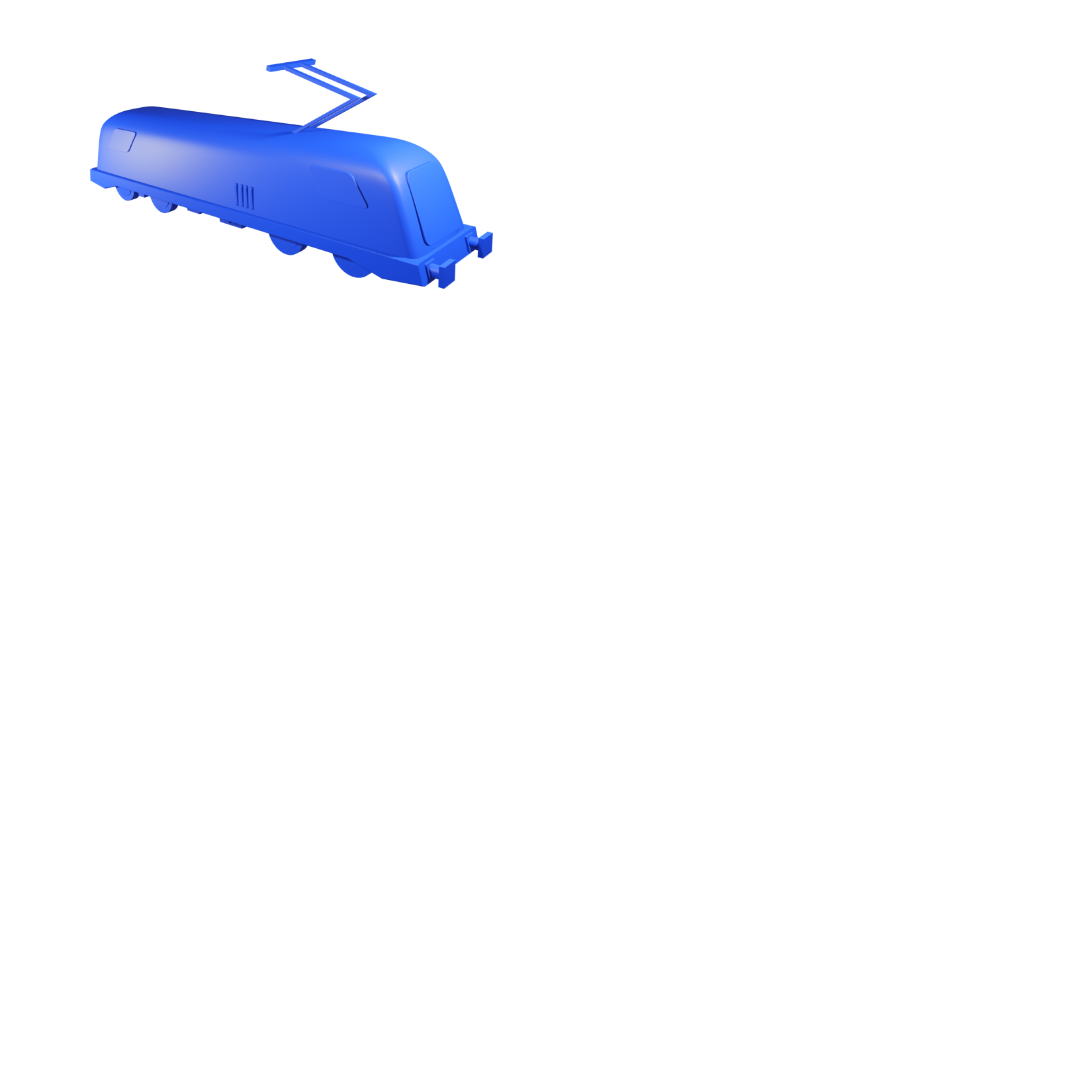
Embracing trains for a more sustainable transportation
RailNetEurope (RNE) is an umbrella association of European Rail Infrastructure Managers working to facilitate international rail traffic. RNE’s mission is to help its members keep up with the challenges of the rapidly changing railway sector. To achieve a more sustainable future in traffic, it is crucial to increase the number of trains in operation.
The European Union has set ambitious goals to double the number of high-speed passenger trains by 2030 and freight traffic by 2050. Meeting this growing demand requires not only expanding the existing infrastructure but also utilizing it more efficiently.
A prompt digital capacity booking system is essential to achieve this.
While RNE's current digital platform supports long-term capacity planning, many requests come in on short notice, requiring trains to depart as early as 45 minutes after the request. Making this process quick is no easy task. Almost every country has different national processes, not to mention the number of stakeholders needing to work together during the booking process.
To address this challenge, after an extensive discovery phase, we designed and developed a user-friendly digital system that enables quick and easy short-term capacity booking while also integrating with the national systems used by various parties.

Collaboration of numerous countries generates exceptional complexities
Running a train from A to B requires collaboration among multiple stakeholders. The service provider, the Applicant, who intends to operate the train, must communicate their requirements to the Infrastructure Managers (IMs). The IMs know the ins and outs of the infrastructure's limitations, such as available capacity, maximum speed, and maximum train weight.
The Applicants and the IMs negotiate to reach an agreement that enables the train to run.
The reliance on multiple distinct systems throughout the short-term booking process consumed significant time and placed a heavy burden on users. Moreover, the potential for errors was much higher. Hence, there was a pressing need for a unified system that allows users to oversee and manage the entire process efficiently.
To navigate these intricacies, we closely collaborated with DB Netz AG, overseeing railway infrastructure for Deutsche Bahn and Swiss Federal Railways (SBB).
An intuitive tool bridging nations to simplify collaboration
Our goal was to create a comprehensive platform that covers the entire short-term capacity management process, from requesting to accepting offers.
Instead of actively monitoring separate systems, checking emails or making phone calls, Applicants and Infrastructure Managers across Europe can now rely on a single tool that enables them to take the expected actions quickly and intuitively.
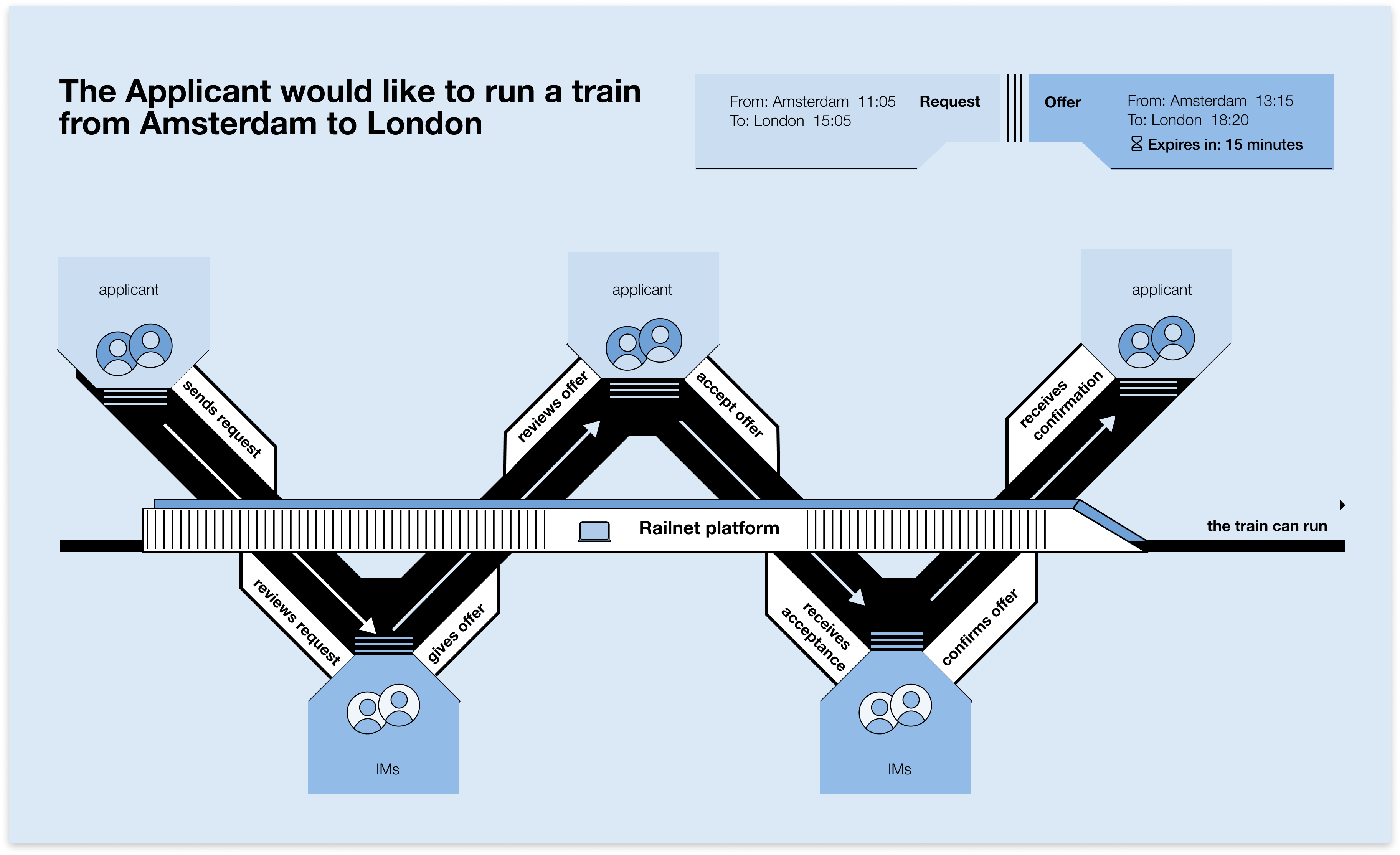
To ensure everyone is informed about when and how to keep the capacity booking process flowing, we've designed a clean interface that simplifies oversight of active tasks.
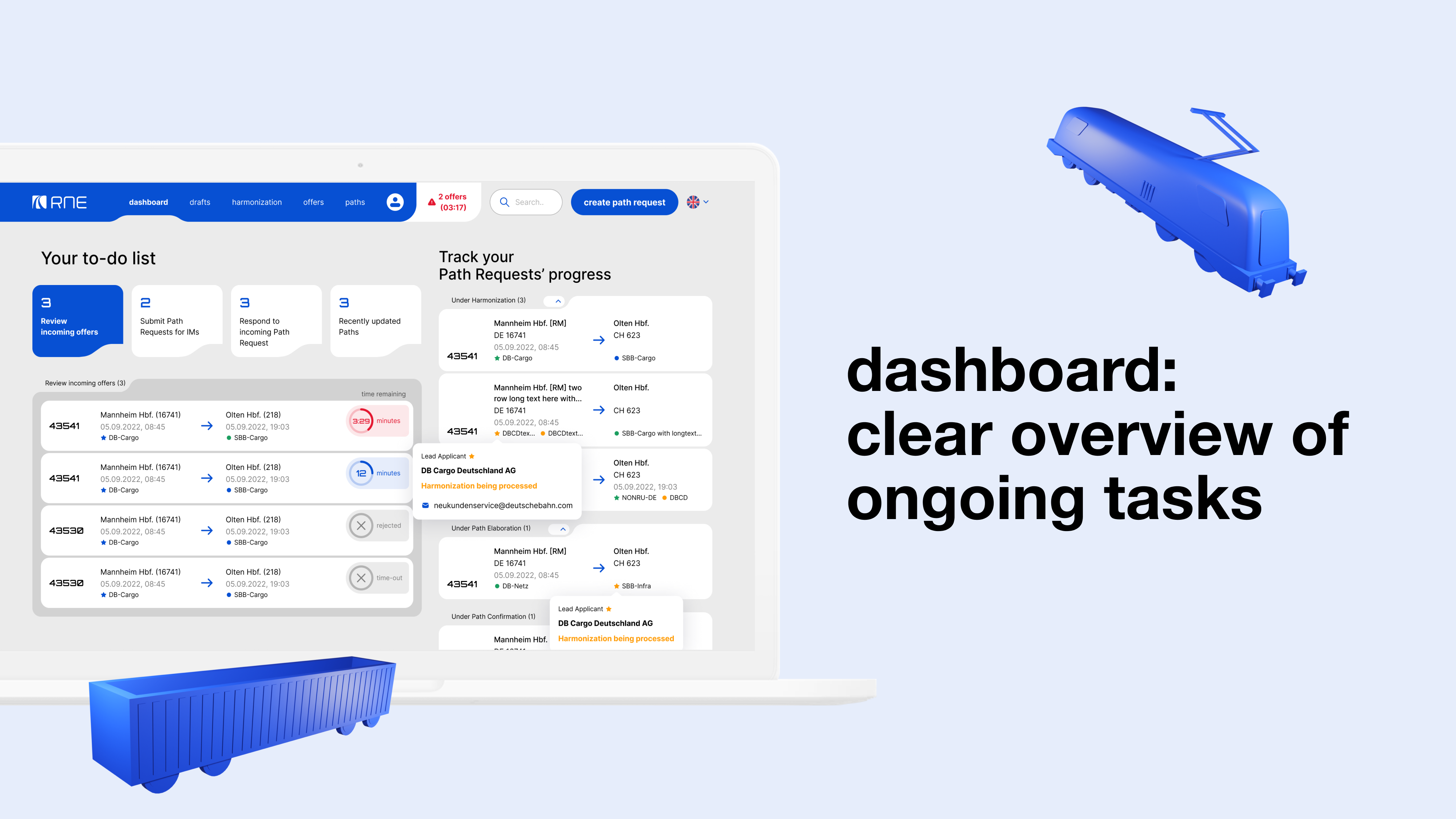
The dashboard features two primary areas: one for highlighting areas requiring immediate attention and another for displaying updates regarding ongoing requests.
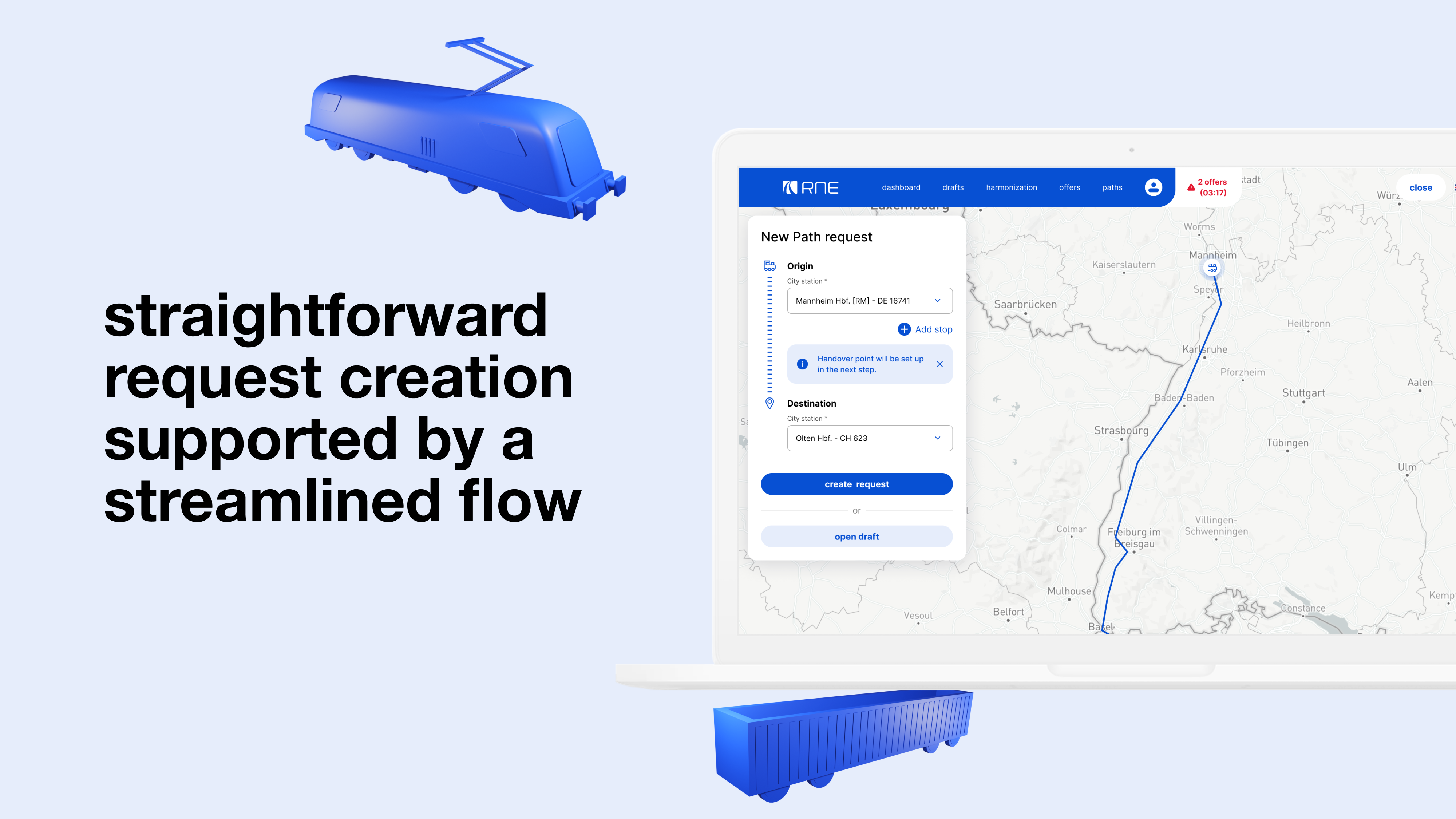
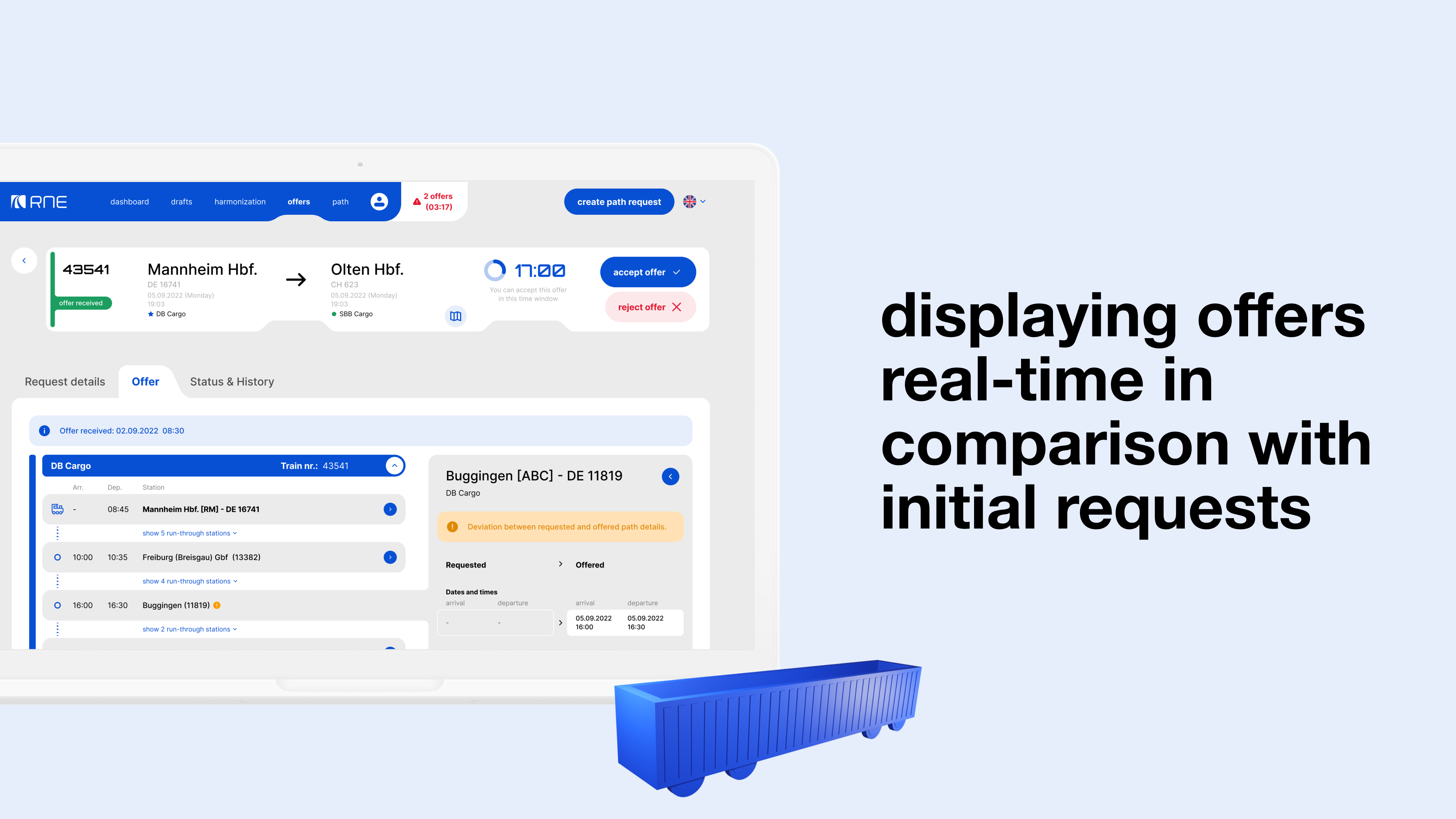
Another specificity of short-term rail booking requests is that the desired route or times are often unavailable due to other trains using the rails at the requested time or due to construction works on the track.
In such instances, it becomes crucial to effectively communicate what options are accessible compared to the initial request at a given time. To present this information, we designed a feature that displays what is the difference between the initial request and the offer in a clear and comprehensible manner.
Empowering infrastructure managers with effortless connectivity with national systems
When designing the platform, we knew that the tool's success would be highly dependent on how well we could integrate it with existing local systems that Infrastructure Managers use every day.
Our solution seamlessly connects to national systems using a European standard data exchange connection so IMs can receive and quickly react to requests through their own system.

Simplifying European rail operations
In conclusion, our collaboration with RailNetEurope to develop a streamlined digital platform for short-term capacity booking is a game-changer for the industry. By seamlessly connecting multiple stakeholders in one digital space and integrating with national systems, we have transformed a complex and time-consuming process into an efficient and user-friendly experience.
This project contributes to the European Union's ambitious sustainability goals and fosters smoother cross-border collaboration, ultimately making rail transport a more competitive and sustainable option for the future.